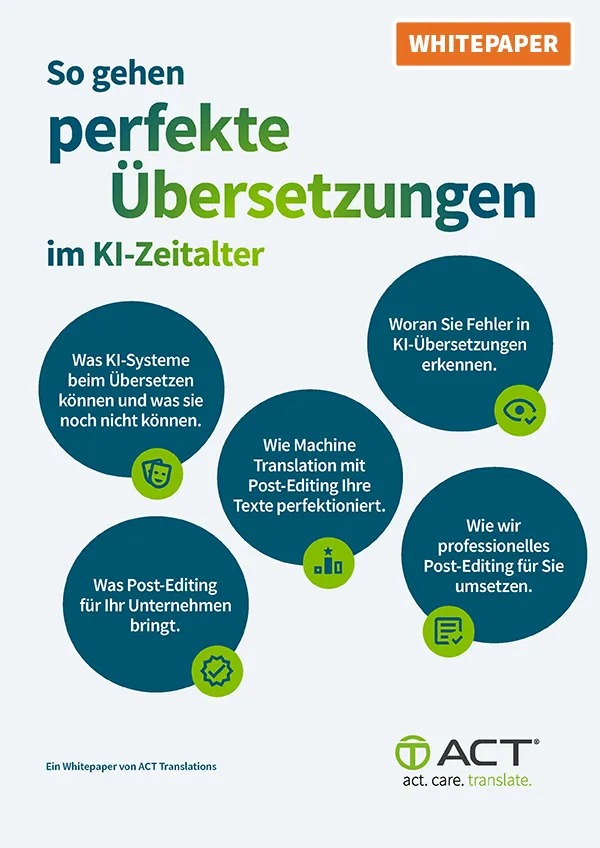Investor relations materials use their own specific language. If you translate terms literally based on a dictionary, you run the risk of being misunderstood. Even worse, you could violate the stringent rules of the various accounting standards. The solution: professional translators – and technological support.
Let’s try a little experiment: Try entering the German terms “Umsatz,” “Rückstellungen,” “Anlagevermögen,” or “Eigenkapitalquote” into one of the established translation programs. You will probably get several suggestions for the correct translation of each word. So, how do you know which translation is correct when it comes to multilingual communication in the financial sector?
“Umsatz” is typically translated as “revenue.” This is usually correct. In some contexts, however, “revenue” can also include subsidies or donations.
Does “Rückstellungen” mean the same thing as “reserves” or perhaps “accruals”? Actually, the correct translation in this context is “provisions”.
In German, “Anlagevermögen” refers to long-term assets such as buildings or machinery. However, translating this word as “investment” is incorrect. The correct term would be “fixed assets.”
“Eigenkapitalquote” is usually translated as “equity ratio.” While this is generally correct, in some jurisdictions it requires a more precise definition, because the term can be interpreted differently depending on the applicable accounting standards.
Sensitive professional translations under time constraints
The list could go on and on: In the finance sector, there is almost always only one correct term for a professionally translated text that is both legally and factually accurate. Specialized translators with the applicable linguistic and subject-specific expertise are very familiar with these terms.
For professional translation service providers, potential error sources are not due to lack of competence but rather time constraints. Translations of annual reports, financial reports, ad hoc announcements, presentations, press releases to the trade press, or blog posts can sometimes feel like open-heart surgery. The translations are often created in parallel with the document in the original language. Consequently, there are frequently last-minute changes, interventions by auditors, or the need to reliably incorporate current developments.
Luckily, there are technologies that substantially eliminate these types of error sources.
Translation memory: Consistent translation
One of these essential tools is translation memory, or TM for short. A translation memory is a bilingual translation database that stores previously translated sentences for a client along with their respective translations. If the same sentence or sentence fragment reoccurs during the translation process, the TM immediately suggests a corresponding translation. Of course, this suggestion is not binding. Depending on the context, the translators of the financial documents can also deviate from it.
The TM ensures consistent and therefore high-quality financial translations in two ways: Identical phrases are translated identically, resulting in a text that flows seamlessly. At the same time, the TM ensures consistency across multiple text types, or in the case of annual reports or annual financial statements, across multiple years. Another benefit of using a translation memory: Time is money! Since the TM reduces the translation time, the savings can be passed on to clients.
The term bank: Accurate terminology guaranteed
Accurate terminology management is particularly important in financial communication. Vague or incorrectly translated terms can lead to misunderstandings. In some cases, they can even have serious legal and financial repercussions.
These types of errors can be eliminated with a term bank, which is basically an elaborate version of a glossary. The term bank contains individual industry-specific terms and their correct translations. This accuracy is particularly crucial when the translation involves a change in legal jurisdiction, such as a switch between IFRS and US GAAP.
Ideally, term banks should be created before the actual project starts. After all, the client’s corporate language may differ here and there from the standards of the respective field, which should be reflected right from the start. If the client already has their own database, it can also be integrated into the term bank before the project starts. A professional term bank is always customer-specific and can be supplemented and updated at any time.




